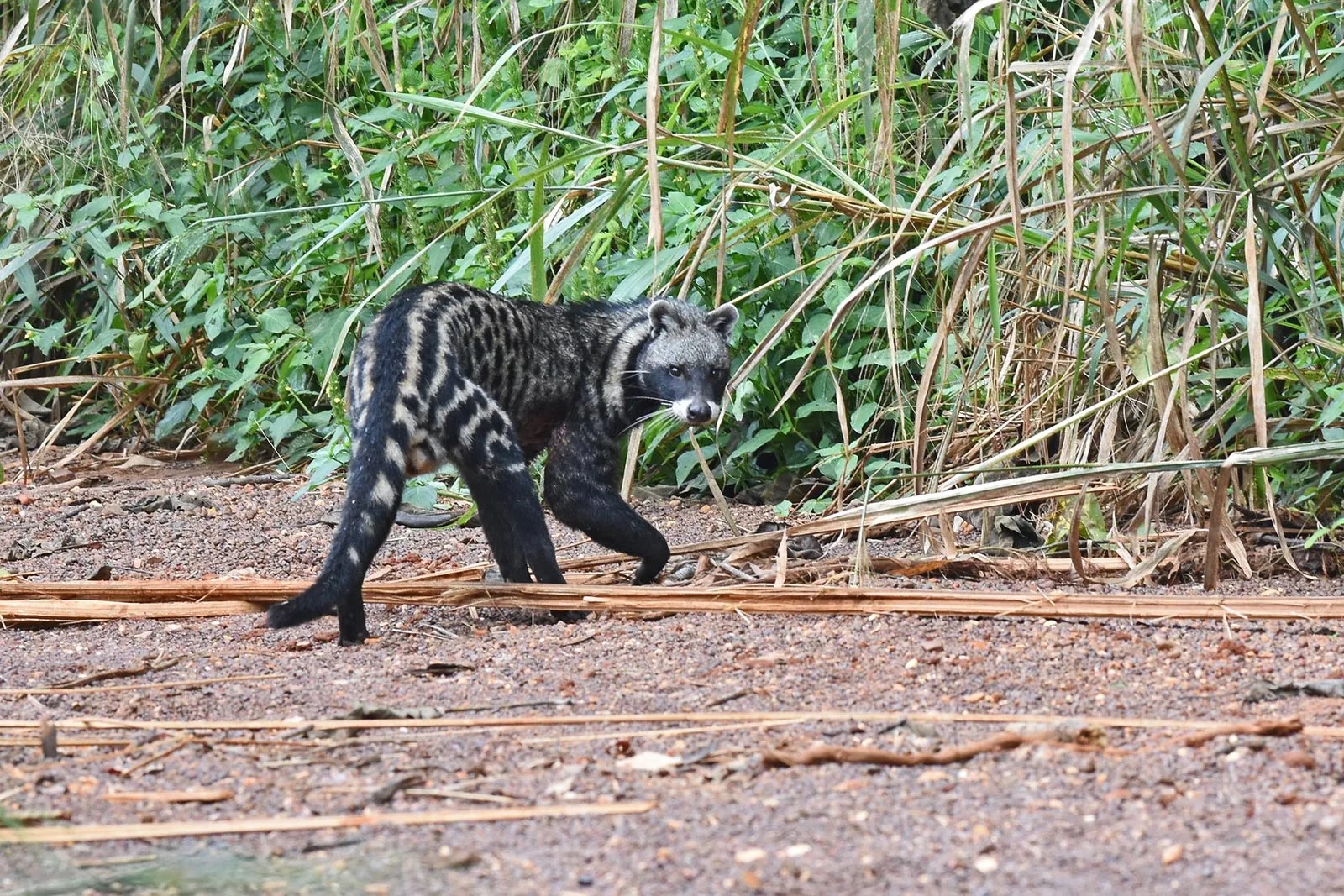Exploring the African Civet in Uganda: A Unique Wildlife Encounter
The African Civet: Uganda’s Nocturnal Predator. Uganda, often referred to as the “Pearl of Africa,“ is a country blessed with rich biodiversity and a diverse range of wildlife. One fascinating creature that calls Uganda home is the African Civet (Civettictis civetta). This elusive and nocturnal mammal is known for its distinctive appearance and intriguing behaviors, making it a captivating subject for wildlife enthusiasts and researchers alike.
Physical Characteristics:
The African Civet is a medium-sized mammal with a unique appearance. Its body is covered in coarse fur that ranges from gray to yellowish-brown, featuring black spots and stripes. The most striking feature is its facial markings, resembling a facial mask, giving it a raccoon-like appearance. The tail is long and ringed, adding to its distinctive look.
Habitat and Distribution:
African Civets are widely distributed across sub-Saharan Africa, including Uganda. They inhabit a variety of ecosystems, from savannas and grasslands to forests and urban areas. In Uganda, these creatures can be found in national parks and reserves, including Queen Elizabeth National Park, Murchison Falls National Park, and Kibale National Park.
Nocturnal Behavior: – The African Civet: Uganda’s Nocturnal Predator
One of the reasons the African Civet is seldom seen by humans is its nocturnal nature. Being primarily active during the night, it spends its days resting in dense vegetation or hidden burrows. The cover of darkness allows it to hunt for food, which mainly consists of small mammals, insects, fruits, and occasionally carrion.
Scent Marking and Communication:
African Civets are known for their unique scent marking behavior. They possess perineal glands that produce a musky secretion used for marking territories and communicating with other civets. The scent is often spread by dragging the perineal region on the ground, leaving a distinct trail. This behavior plays a crucial role in mate attraction and territory establishment.
Conservation Status: – The African Civet: Uganda’s Nocturnal Predator
While the African Civet is not currently considered endangered, its population faces threats from habitat loss, poaching, and the pet trade. Conservation efforts in Uganda focus on protecting their natural habitats and raising awareness about the importance of preserving biodiversity.
Role in Ecosystem: – The African Civet: Uganda’s Nocturnal Predator
African Civets play a vital role in the ecosystem by contributing to pest control. Their diet includes a variety of insects and small mammals, helping to regulate populations of potential agricultural pests. As opportunistic feeders, they also play a part in seed dispersal, contributing to the maintenance of plant diversity.
Ecotourism Opportunities:
For wildlife enthusiasts visiting Uganda, the chance to encounter the African Civet is a thrilling prospect. Ecotourism initiatives in national parks provide opportunities for guided night safaris, allowing visitors to observe these elusive creatures in their natural habitat while contributing to conservation efforts.
Remarks: – The African Civet: Uganda’s Nocturnal Predator
The African Civet in Uganda is a testament to the country’s remarkable biodiversity. As efforts continue to protect their habitats and raise awareness about their importance in the ecosystem, the hope is that future generations will have the opportunity to marvel at these captivating creatures in the wild. Preserving the habitat of the African Civet not only ensures the survival of a unique species but also contributes to the overall health and balance of Uganda’s diverse ecosystems.








